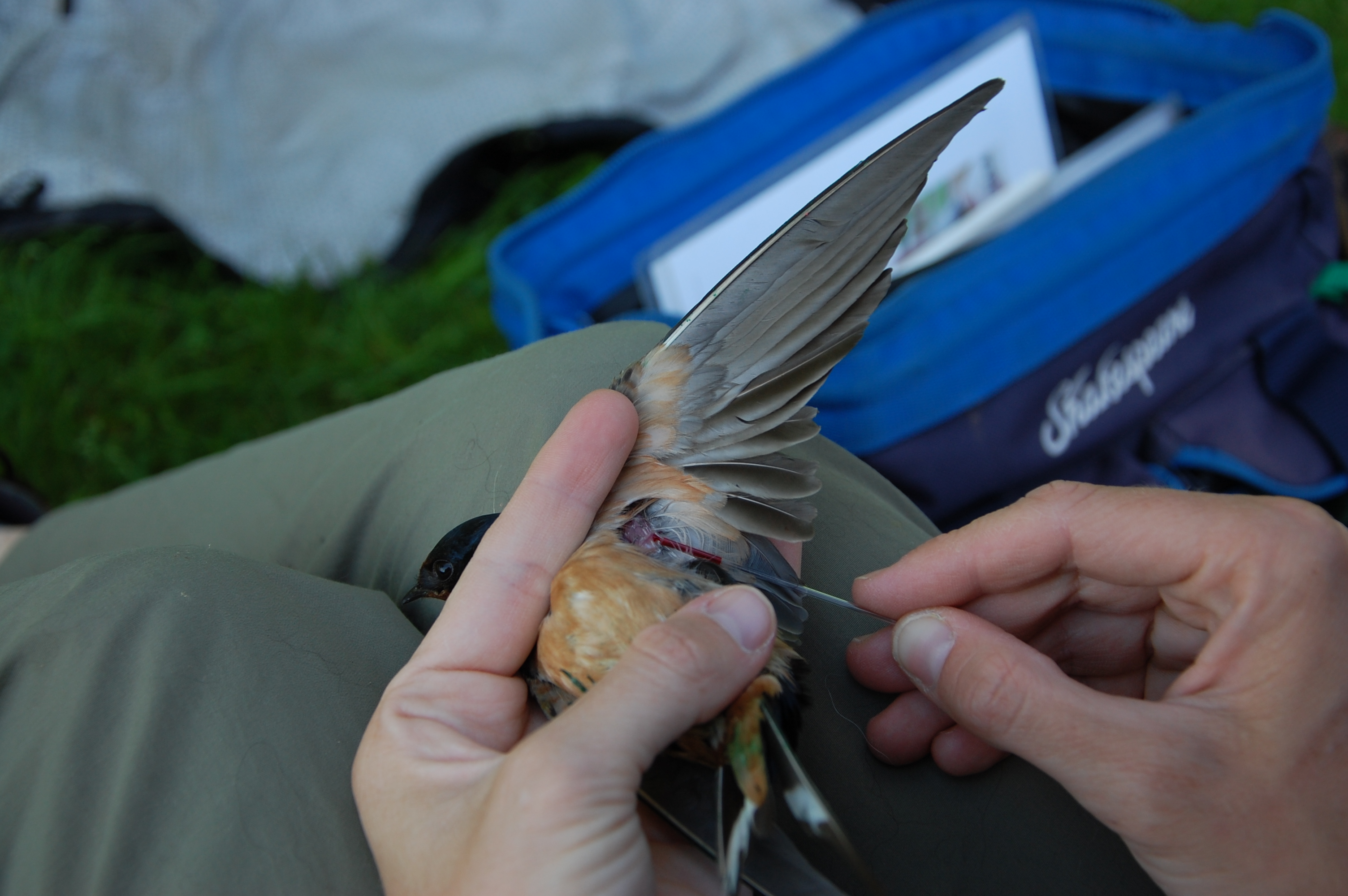By Tara Imlay
Linked paper: Multiple intrinsic markers identify carry-over effects from wintering to breeding sites for three Nearctic–Neotropical migrant swallows, by T.L. Imlay, F. Angelier, K.A. Hobson, G. Mastromonaco, S. Saldanha, and M.L. Leonard, The Auk: Ornithological Advances.
There’s no shortage of studies demonstrating that conditions during one part of birds’ annual of breeding and migration cycle can affect individuals in subsequent stages — a phenomenon known as carry-over effects. However, getting information on the conditions experienced by individual birds throughout the annual cycle and their resulting effects is a challenge, even with advances in biologging technologies. Another approach is to use intrinsic markers, the information recorded in a bird’s tissues, such as feathers and blood. Sampling these tissues can provide us with insights into on the conditions experienced by individuals during previous stages of the annual cycle.
During our study, we monitored the nests of Bank, Barn, and Cliff swallows to determine when they began breeding and how many young each pair produced. We also captured adults, measured their body condition, and collected feather and blood samples.
These tissue samples were examined for three different type of intrinsic markers. These birds grow their feathers during the winter, and by analyzing them for stable isotopes, we can get a snapshot of the habitats that the swallows were using during this time. For example, the ratios of heavy and light hydrogen isotopes vary across the landscape with factors like rain, snow, and elevation. Feathers also provide information on birds’ corticosterone levels when they were grown. Corticosterone is a hormone that is released when the individual experiences adverse conditions, so higher levels suggest that the birds were under stress. We used the blood we collected to examine changes in telomere length between years. Telomeres are the caps on the ends of our chromosomes, and they shorten more quickly during adverse conditions, so both the corticosterone levels and changes in telomere length were considered indicators of stress during the non-breeding period. With this information, we modeled how winter habitat and stress affected several potential carry-over effects when the birds returned to breeding, including their body condition, timing of breeding, and breeding success.
We found that all three species experienced carry-over effects from winter to breeding, but the specific relationships varied between species, as well as between sexes within each species. Across all species, we found carry-over effects that ultimately lead to lower breeding success for male Bank Swallows, female Barn Swallows, and female and male Cliff Swallows. Most carry-over effects were the result of harsh winter habitat conditions, measured by various stable isotopes (δ2H, δ13C and δ15N). Cliff Swallows also experienced lingering effects of stress, as indicated by corticosterone levels and changes in telomere length.
Our study shows how researchers can use multiple intrinsic to get a better picture of whether winter conditions may result in carry-over effects for different species and sexes. All three of the species in our study are declining in at least part of their breeding range, and our work also provides important insights into whether carry-over effects may impact these populations — if conditions in the non-breeding season continue to become more challenging, we may begin to see those effects showing up in the form of further population declines for swallows across North America.
